What Are Lederhosen Made From? Leather Types Explained
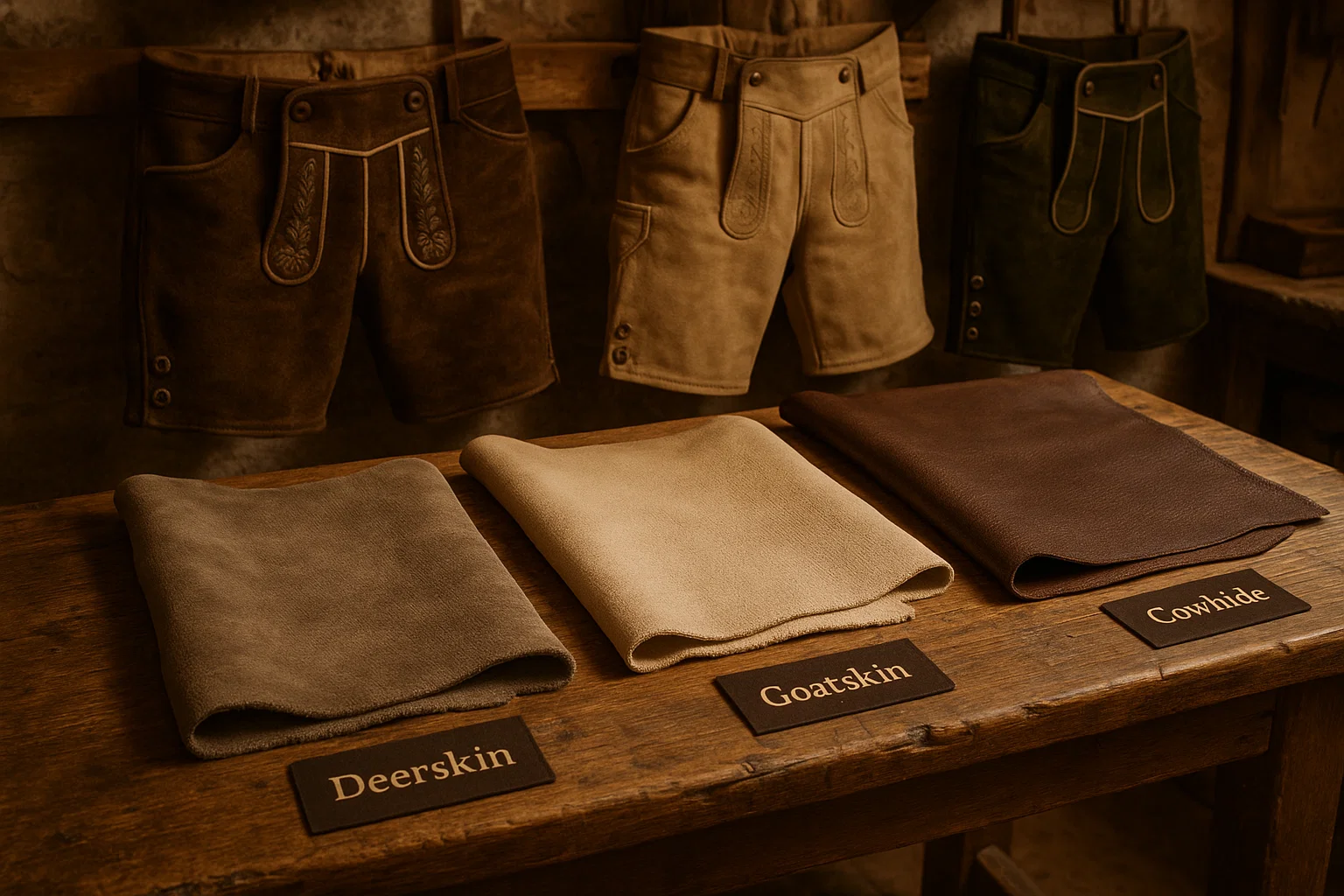
What Are Lederhosen Made From?
Lederhosen are more than traditional German clothing—they are a symbol of Alpine heritage, expert craftsmanship, and long-lasting wear. Originally worn by farmers and hunters in the Bavarian and Austrian Alps, these iconic leather trousers were built for tough outdoor work. Today, they’re celebrated not just at Oktoberfest but as a statement of pride and authenticity. Whether you’re considering your first pair or upgrading to a premium style, the material used in Lederhosen construction is key. From deerskin and cowhide to vegan leather, each fabric tells a story of tradition, durability, and design.
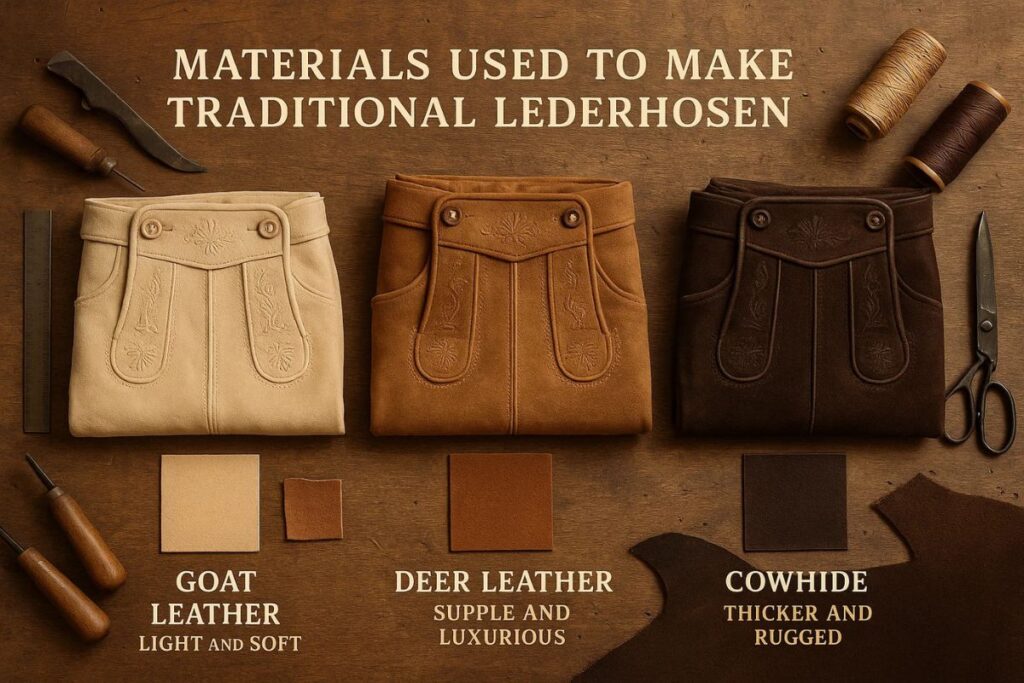
Traditional Origins of Lederhosen Materials
Lederhosen were born out of necessity. Alpine laborers needed clothing that could withstand harsh weather, rough terrain, and demanding daily work. Leather—specifically from deer or goat—offered the perfect blend of strength, breathability, and flexibility. These garments were never just about looks. Their quality came from functionality: the ability to move freely, resist wear, and endure over time. Today’s authentic Lederhosen still reflect this legacy, using high-grade hides that continue to showcase the practicality and pride of traditional Bavarian craftsmanship.
How to Make Lederhosen
Types of Leather Used in Authentic Lederhosen
Not all leather is created equal. The type of hide used in Lederhosen significantly impacts the look, comfort, and cost. From the soft elegance of deerskin to the rugged resilience of cowhide, here’s what to expect from each traditional option.
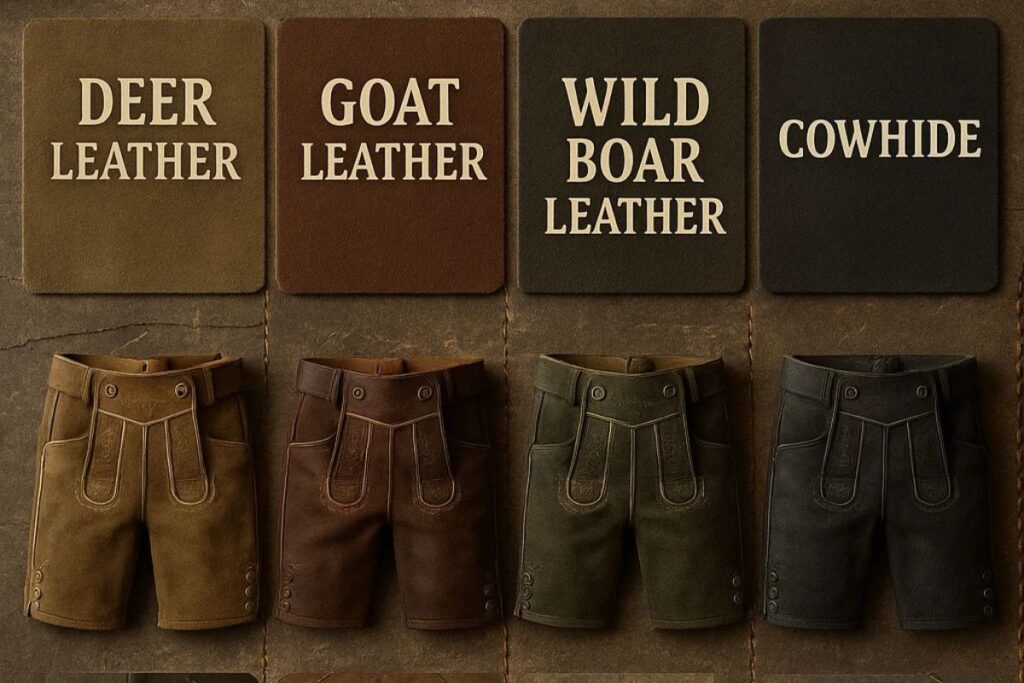
Deerskin: Luxurious, Soft, and Form-Fitting
Deerskin Lederhosen are considered the pinnacle of quality. This leather is buttery soft, exceptionally breathable, and molds perfectly to your shape over time—offering a tailored feel from the first wear. Ideal for both formal occasions and daily wear, deerskin is known for its graceful aging and rich patina. Though more expensive, it’s often used in heirloom-quality pieces that balance elegance and endurance.
Goatskin: Lightweight and Smooth
Goatskin offers a smooth finish and is lighter than cowhide, making it a practical and affordable choice for mid-range Lederhosen. It’s durable yet flexible, offering a refined look that’s great for casual outings or semi-formal events. This type is ideal for first-time buyers seeking tradition without the premium price tag.
Cowhide: Durable and Structured
Cowhide is the toughest of the classic leather options. It provides a heavier, more rigid fit—perfect for structured styles or environments that demand extra durability. Cowhide doesn’t mold to the body as quickly, but it lasts for years and adds a strong, masculine edge to the overall aesthetic.
How to Measure for Lederhosen
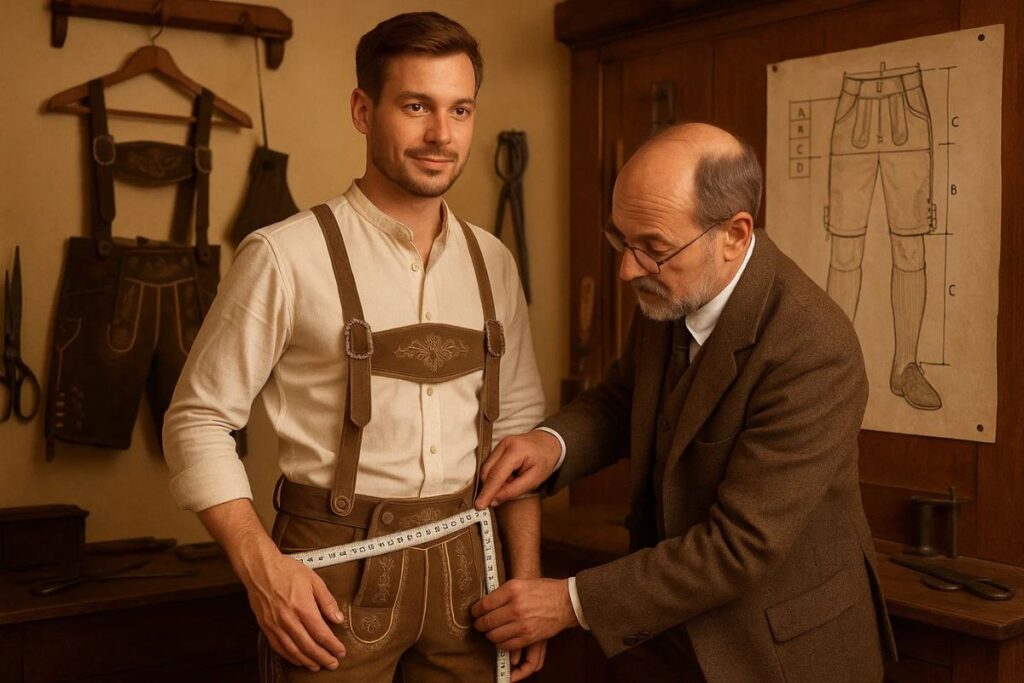
Suede: Casual and Rustic
Suede Lederhosen deliver a relaxed, country-style charm. Made from the underside of animal hide, suede has a soft texture and matte finish. It’s often used in more affordable designs and suits those seeking comfort over formality. However, suede requires more care and protection from moisture.
Explore our collection of Men’s Lederhosen for handpicked pieces in deerskin, cowhide, goatskin, and suede—crafted to meet every level of tradition and budget.
Why Deerskin Is the Premium Choice
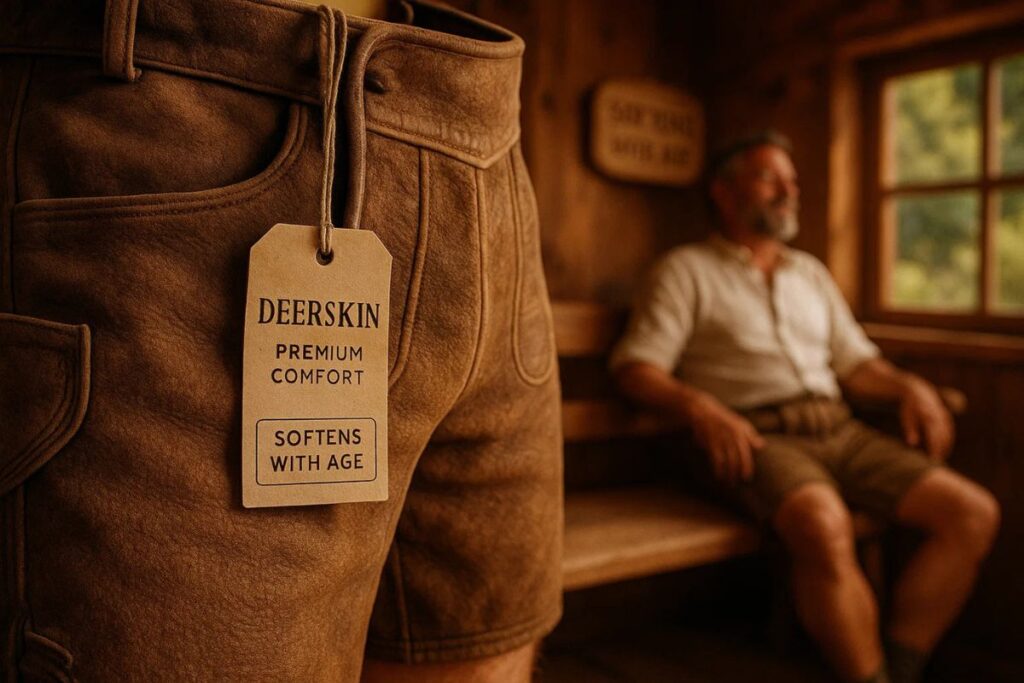
Comfort That Improves with Time
Deerskin offers unmatched comfort. Its natural softness means there’s little to no break-in period, and it conforms to your body for a second-skin feel. Whether you’re dancing at Oktoberfest or wearing it to a wedding, this leather supports long hours of wear without discomfort.
Breathable and Lightweight for Year-Round Use
Despite its durability, deerskin is airy and breathable. It provides warmth without overheating, making it a go-to choice for all seasons. Whether in summer heat or cool autumn weather, deerskin Lederhosen maintain a pleasant temperature.
Aged Beauty: Developing a Personal Patina
Over time, deerskin develops a rich, lived-in look. This patina adds character and uniqueness to your Lederhosen, telling the story of every wear. It’s this visual evolution that makes deerskin not just a garment, but a piece of personal history.
The Hallmark of Handcrafted Lederhosen
Deerskin is typically reserved for the finest Lederhosen, featuring traditional details like embroidery, horn buttons, and customized suspenders. These handcrafted pieces reflect Bavarian heritage and are perfect for those who want to invest in authenticity and artistry.
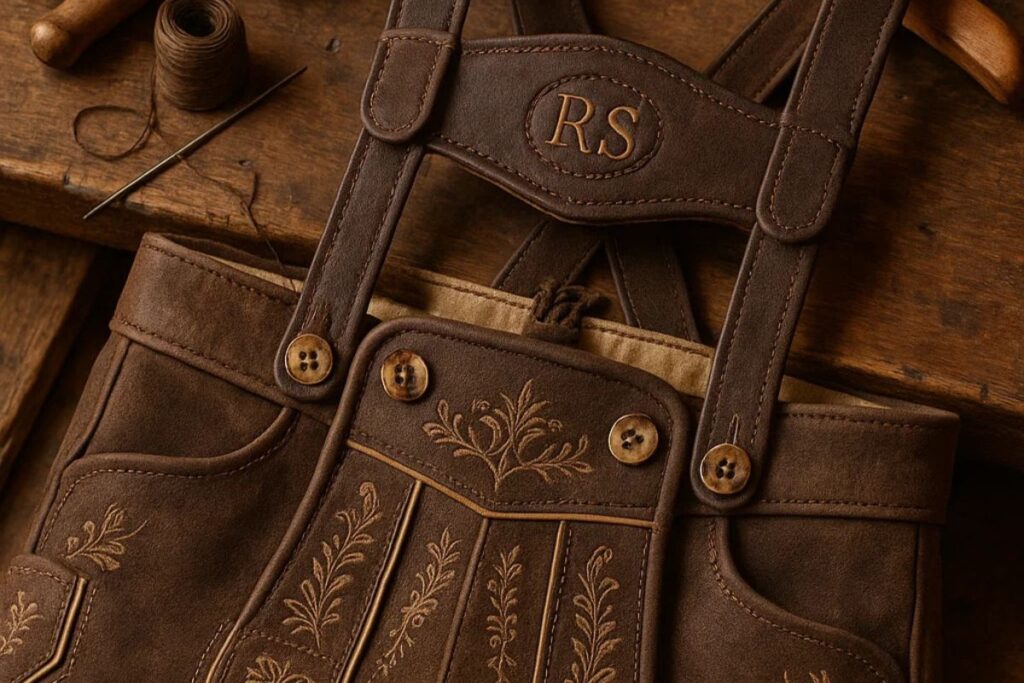
Comparing Goatskin, Cowhide, and Suede
Each leather type offers specific benefits suited to different needs. Goatskin combines durability and comfort, perfect for mid-tier wearers. Cowhide’s stiffness lends itself to formal, heavy-duty styles, while suede offers a relaxed feel for casual occasions. Here’s a breakdown:
- Goatskin: Soft, lightweight, affordable. Great for beginners.
- Cowhide: Tough, rugged, long-lasting. Ideal for structured styles.
- Suede: Soft, rustic, affordable. Best for casual or costume use.
Each material also has different care requirements. For instance, Men’s Suede Lederhosen must be kept away from moisture, while cowhide benefits from occasional brushing. Browse our Budget Lederhosen Collection to compare features and find the right leather for your lifestyle.
Vegan and Modern Alternatives to Traditional Leather
Vegan Lederhosen made from faux leather, cotton blends, or polyester-suede offer a budget-friendly and cruelty-free option. These garments often replicate the look of real leather, but lack the breathable comfort, flexibility, and longevity of authentic hides. They are most suitable for costume use, short-term wear, or newcomers attending Oktoberfest for the first time.
- Cotton-blends: Lightweight and breathable, but less durable.
- Faux leather: Imitates real hide but may feel stiff and wear quickly.
These alternatives serve a purpose, especially for those exploring Trachten fashion without making a major investment.
Hidden Details: Linings, Stitching, and Embellishments
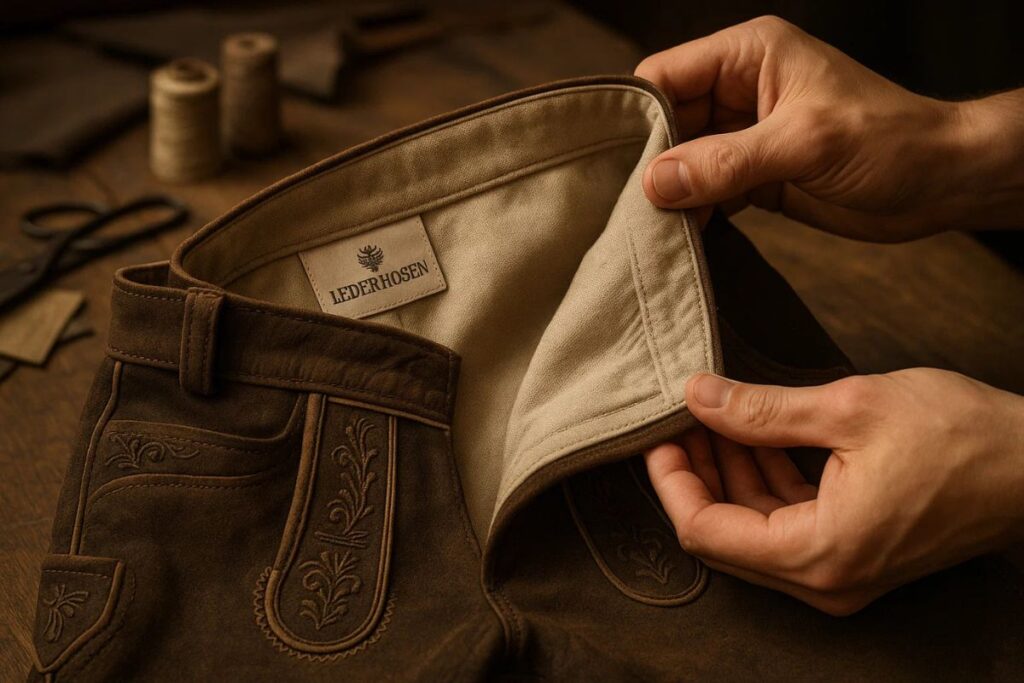
Linings: Comfort Beneath the Surface
High-quality Lederhosen often feature inner linings made of breathable cotton or satin. These linings reduce friction, manage moisture, and add comfort—especially during long hours of wear. Thoughtful lining design is a hallmark of well-crafted garments.
Stitching: A Mark of Durability
Reinforced stitching is key to making Lederhosen last. Traditional methods like saddle stitching and bar tacks at stress points ensure that your garment holds up over time. Heavy-duty thread and artisan techniques also add a visual charm to seams and joints.
Embroidery and Details That Tell a Story
True Lederhosen feature regional embroidery with cultural motifs such as oak leaves, deer, or alpine flowers. Horn buttons, contrast piping, and leather flaps are not just decorative—they’re part of the heritage. These embellishments often represent local traditions or family history, adding meaning to each piece.
How Materials Influence Fit, Lifespan, and Care
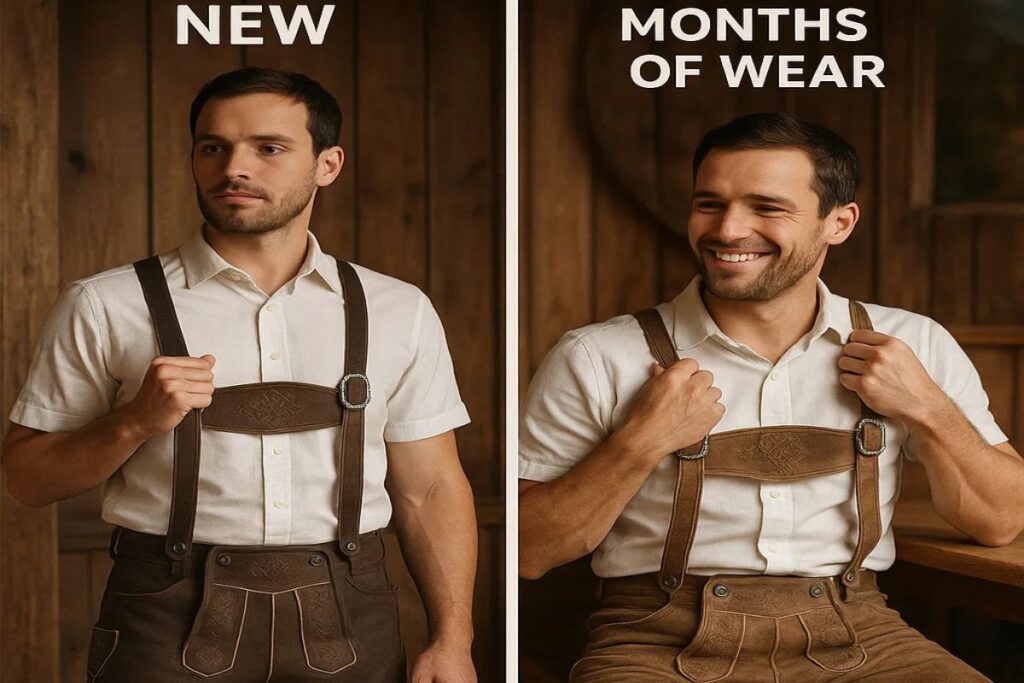
Leather That Forms to Your Body
Authentic leather—especially deerskin and goatskin—gradually molds to the wearer’s shape, offering a truly custom fit over time. This results in a comfortable, flattering silhouette that only improves with use.
Built for Longevity
Durability varies by material. Deerskin offers the best balance of softness and resilience, while cowhide excels in long-term toughness. Faux leather and cotton options may work for occasional use, but they lack the endurance of traditional hides.
Proper Leather Care Makes All the Difference
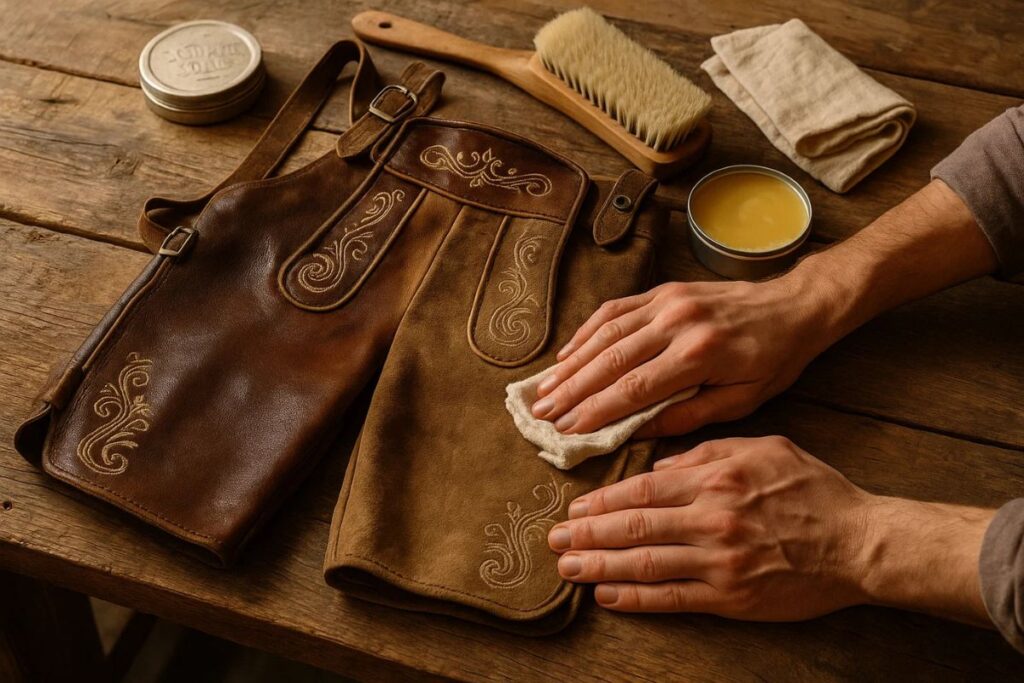
To preserve your Lederhosen:
- Air-dry after use, away from direct sunlight.
- Use leather conditioner every few months.
- Never machine wash or soak—spot clean with a damp cloth.
Need more tips? Check out our Lederhosen Care Guide to learn how to extend the life and appearance of your garment.

Anna Bauer is a seasoned Bavarian fashion expert, cultural consultant, and heritage stylist with over a decade of hands-on experience in traditional German clothing. Born in Munich, the heart of Bavaria, Anna grew up surrounded by the rich traditions of Trachten fashion. Her passion for cultural attire led her to pursue a degree in Fashion and Textile Design at the prestigious University of the Arts Berlin, where she specialized in European folkwear.
Over the past 12+ years, Anna has collaborated with renowned Trachten designers, styled outfits for Oktoberfest events across Germany, and contributed articles to top fashion and culture magazines across Europe. Her work focuses on preserving the authenticity of Lederhosen and Dirndl wear while helping modern audiences style them with confidence and flair.
As the lead content contributor for German Attire, Anna combines her academic background, professional styling experience, and deep cultural roots to provide readers with valuable insights into traditional German fashion. Her blog posts cover everything from historical origins and styling guides to care tips and festival outfit planning—making her a trusted voice for anyone looking to embrace Bavarian heritage in a stylish, modern way.
